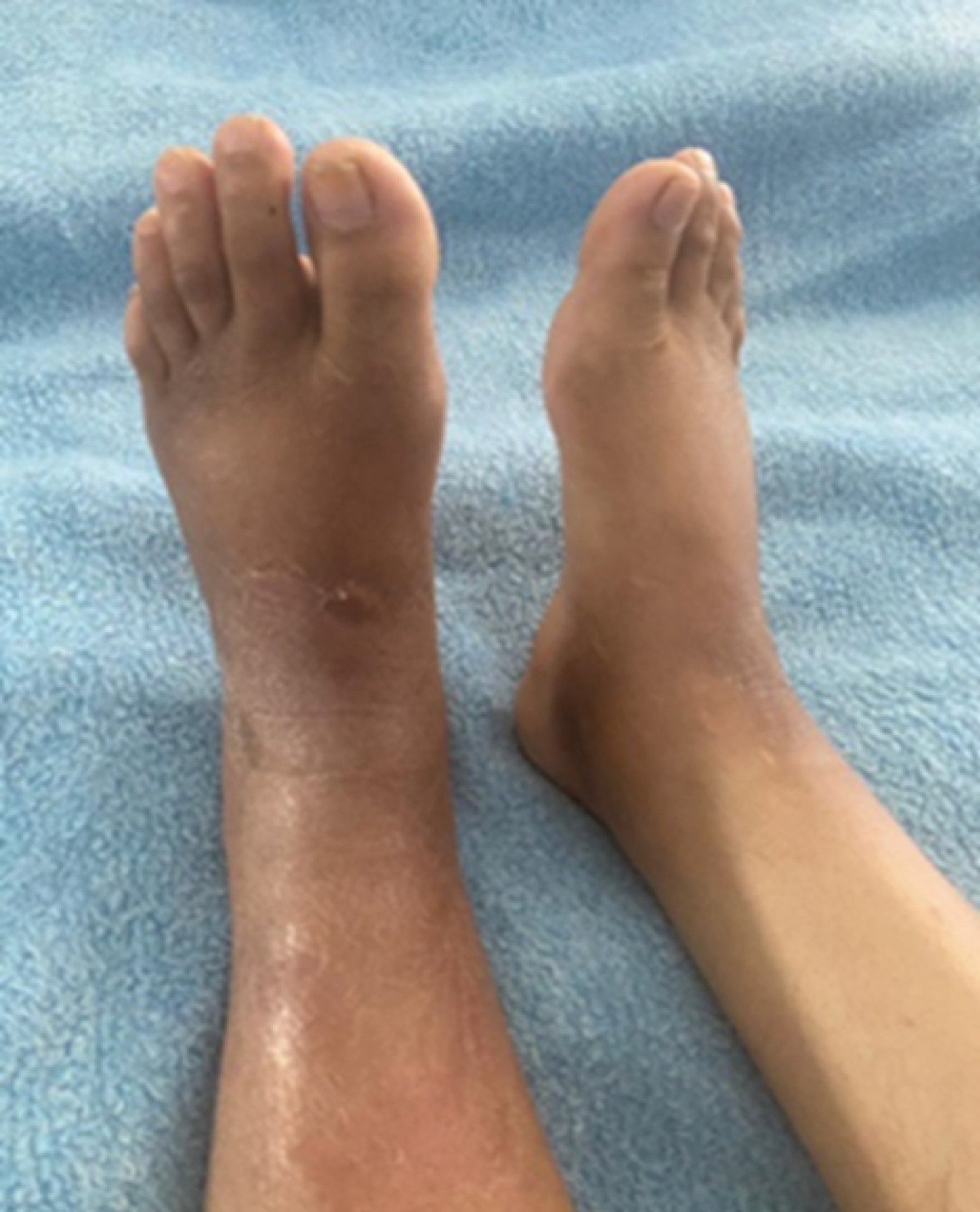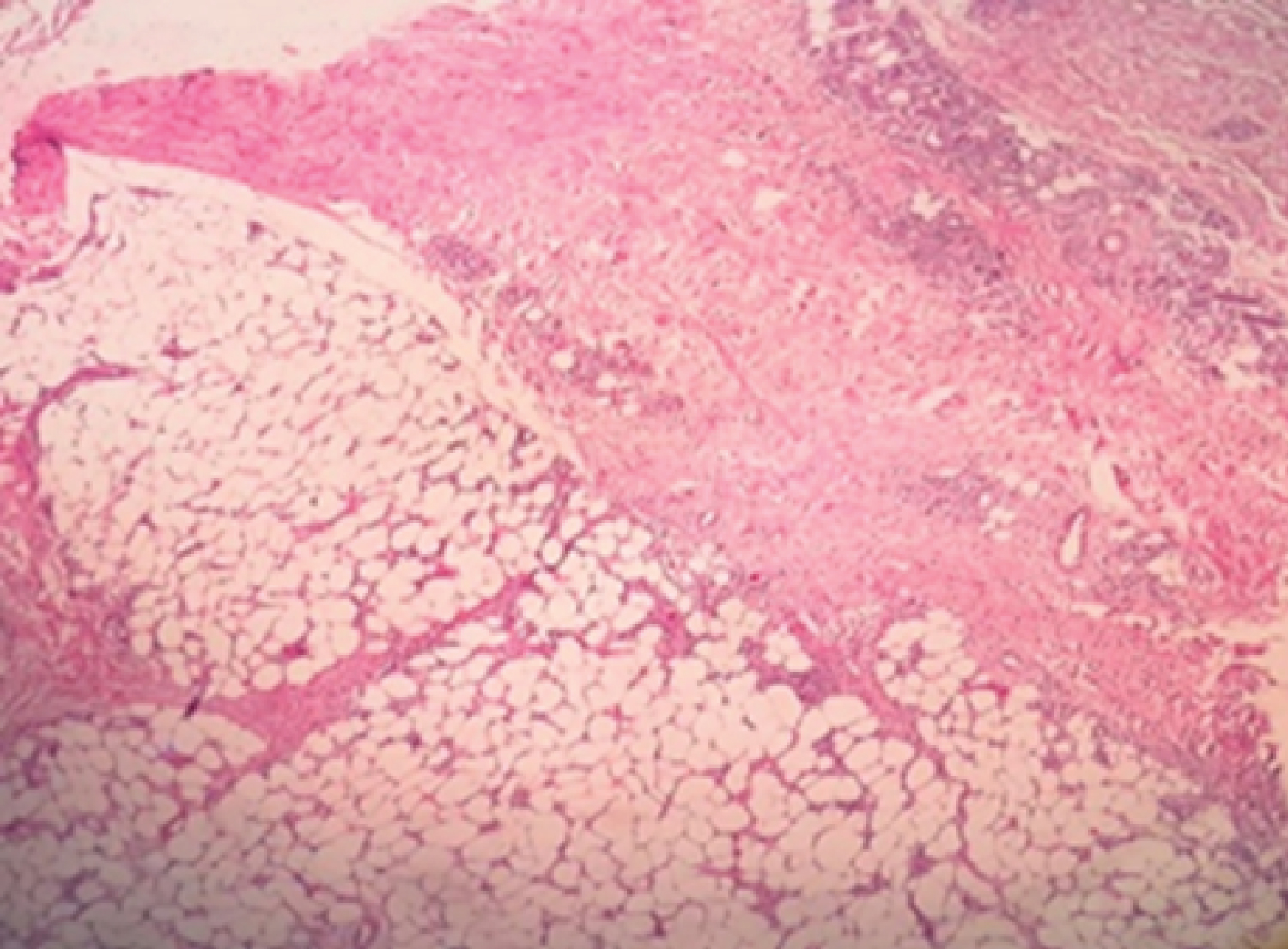This is the most common neutrophilic dermatosis and the prototype of superficial dermal acute neutrophilic dermatoses. Its incidence is rare. Sweet's syndrome predilection is for adults aged 30 to 50, but children have also been reported. There is a female predilection [1]. It is distributed worldwide, with no racial predilection. The typical picture is of a sudden-onset rash, accompanied by high fever and neutrophilic leukocytosis [2]. Recombinant granulocyte-colony stimulating factor (G-CSF) has been implicated in almost half of all cases. All observations of G-CSF-induced Sweet syndrome have been reported in the course of hematological malignancies or HIV infection [3]. We describe a case of Sweet syndrome induced by AFINITOR (Everolimus) in a patient undergoing treatment for breast cancer.
A 40-year-old female patient with breast cancer was receiving afinitor 10 mg daily; 08 days later she developed fever, arthralgias and nodular, erythematous, infiltrated, hot and painful lesions on her hands, legs and knee and ankle joints (Figure 1 and Figure 2). Biological tests showed anemia, Hb: 08 g/dl, normal leukocytes; inflammatory syndrome, CRP: 118. Microbiological and autoimmune tests were negative. The skin biopsy was compatible with Sweet's syndrome, with histological examination showing a moderately acanthosic epidermal coating surmounted by orthokeratotic hyperkeratosis and the site of very discrete punctate lymphocyte exocytosis. The superficial and mid-edematous dermis are the site of telangiectasias with aspects of leukocytoclastic vasculitis, interstitial nuclear debris with rare foci of fibrinoid necrosis (Figure 3). A diagnosis of Sweet's syndrome on AFINITOR (Everolimus) was made, and intravenous corticosteroid therapy was started with rapid recovery.
 Figure 1: Infiltrated erythematous nodules.
View Figure 1
Figure 1: Infiltrated erythematous nodules.
View Figure 1
 Figure 2: Infiltrated erythematous plaques.
View Figure 2
Figure 2: Infiltrated erythematous plaques.
View Figure 2
 Figure 3: Edematous superficial and middle dermis, aspects of leukocytoclastic vasculitis.
View Figure 3
Figure 3: Edematous superficial and middle dermis, aspects of leukocytoclastic vasculitis.
View Figure 3
Sweet syndrome is an acute neutrophilic dermatosis characterized by the abrupt onset of skin lesions accompanied by fever, arthralgias, leukocytosis and diffuse neutrophilic infiltration of the dermis, as well as by an excellent response to corticosteroid therapy [1,2]. Sweet syndrome caused mainly by substances containing recombinant granulocyte growth factor (G-CSF) has been described [1], but caused by Everolimus, an antineoplastic protein kinase inhibitor, is rare in our patient's case.
The diagnosis of sweet syndrome is based on clinical and histopathological criteria. Management is based on precise identification of clinical expression, systemic manifestations and the presence of associated disease [1]. General corticosteroid therapy is the standard treatment for acute and severe forms.